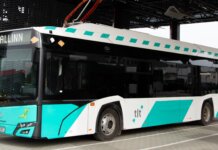The European Automobile Manufacturers’ Association (ACEA) has released new data on the number of charging points and refueling stations required for zero- and low-emission trucks to meet the 2025 and 2030 CO2 targets. In terms of charging points for electric trucks, this means going from close to zero today to approximately 90,000 public points over the next decade in order to enable the transition to carbon-neutral road transport.
“Obviously, our industry is currently grappling with immediate issues related to the COVID-19 crisis,” says Henrik Henriksson, CEO of Scania. “Despite this, we are keeping the long-term climate objectives in sight. Neither the truck industry nor policy makers can afford to ignore this challenge.”
Last year, the EU adopted its first-ever CO2 standards for heavy-duty vehicles, which will apply in 2025 (-15%) and 2030 (-30%). Presently, the majority of trucks sold in Europe still run on diesel, as it is the most convenient and cost-efficient option available to transport operators.
In 2030, a fleet of approximately 200,000 battery-electric trucks should be in operation in the EU to meet the CO2 target set for that year, according to ACEA estimates. With around 700 medium and heavy battery-electric trucks sold last year, this means that sales of electric trucks will have to grow 28-fold over the next 10 years.
Heavy-duty vehicles cannot use passenger car infrastructure because of their much higher power and energy demand, as well as specific space, parking and access requirements. If Europe is to achieve these minimum levels of deployment, binding truck infrastructure targets for member states must be set now by the Alternative Fuels Infrastructure Directive, ACEA urges.






